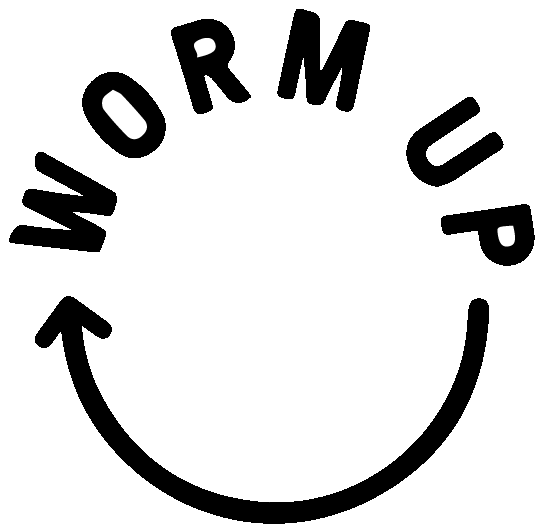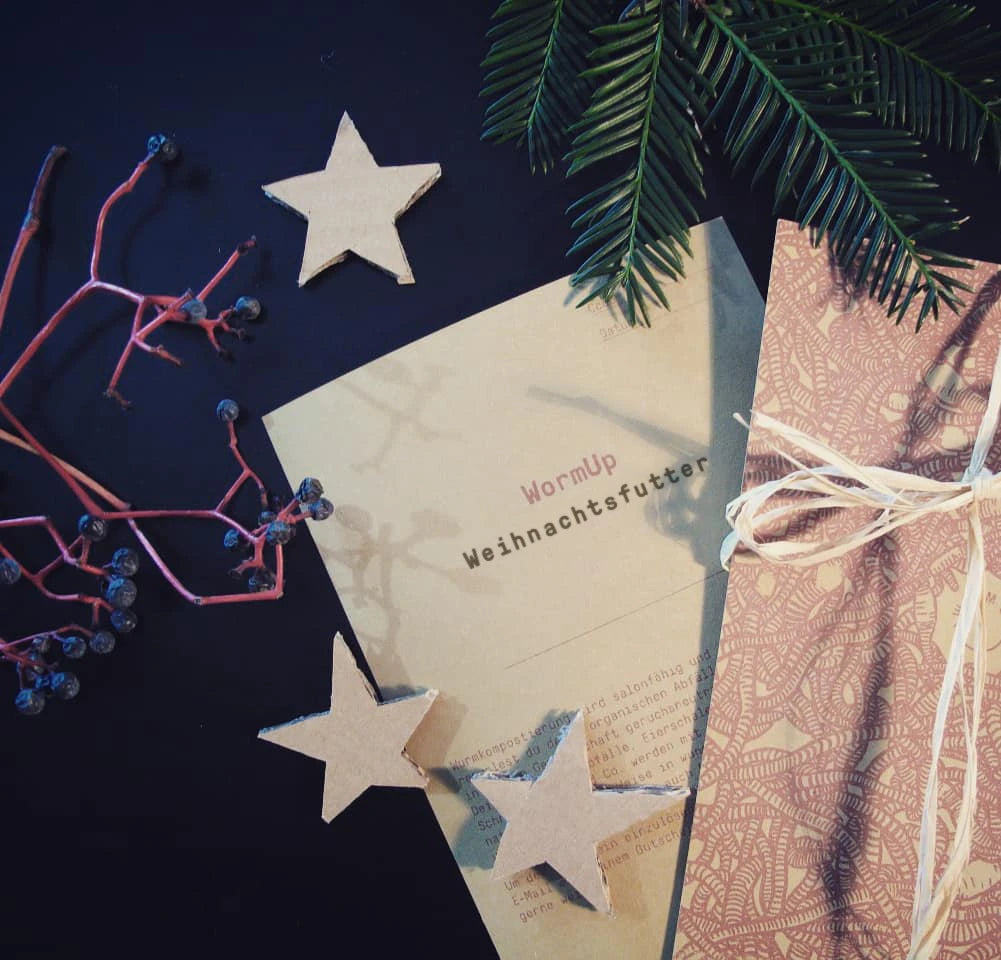During the Christmas season, many households produce special organic waste. We have put together usage and feeding tips for you for the most common of these types of waste. It's best to read before you go shopping ;)
Christmas star
With its rich red leaves, the poinsettia is probably the ultimate Christmas plant. Its leaves are also an eye-catcher in the worm composter and very easy to compost. In their homeland, poinsettias grow into entire trees, with green leaves that naturally turn red in December-January. In our latitudes, the decorative plants that are mainly grown for the Christmas business usually only survive the Christmas season and are then disposed of. If this is the case, the plant is very welcome to be converted back to humus in your worm composter. Chop up the plant a little, then it will move faster. The plant belongs to the spurge family and contains poisonous milky sap. The milky juice does not cause any problems for the ecosystem in the worm composter. People can sometimes experience mild irritation.
Peanut and other nut shells
Nut shells are very suitable for the worm composter because they are a wonderful structural material. Structural material enables an even distribution of oxygen, which is important for the worms and all other inhabitants of the worm composter ecosystem. So if you like cracking nuts, you can definitely put the shells in the composter. However - and this should be noted with regard to the quantities to be added - the shells are only converted very slowly. It is not uncommon for them to still be found in mature compost, while all other organic material has already been transformed into the finest humus.
Tip: You can speed up the decomposition process by crushing the nut shells and soaking them in water before adding them to the composter.
Tangerines
Christmas time is tangerine time. What used to be reserved for the emperor and his officials (Mandarin) in China has long been an integral part of supermarkets around the world. The citrus fruits, rich in vitamin C, taste refreshing and strengthen our immune system. Like the peels of oranges or lemons, tangerine peels have an acidifying effect in the composter. Cut into small pieces and fold in, but the shells quickly degrade. A lot of finely ground eggshell or our Mineral Mix helps to counteract acidification in your composter. You can find more information about composting citrus fruits in our blog post on the subject.
Candle wax
Advent, Advent, a little light is burning – Advent is the time of candles. But are wax residues compostable? Unfortunately, the answer is usually no. As beautiful as candles are, most candles are made from fossil fuel, sorry? You read that right. The wax in most candles consists mainly of paraffin, a raw material obtained from the processing of crude oil. Fortunately, there are alternatives: candles made from beeswax, soybean wax, rapeseed wax or even biomass candles. All of these, albeit slowly, are readily convertible to worm castings in your vermicompost bin. So the candle romance under the tree is preserved for us. Tip: The most sustainable type of candles is probably the leftovers from candles that have already burned down.
Napkins
Was that delicious! Now wipe your mouth again with the napkin and lean back and relax. Satisfied, with a view of the empty plate, your thoughts are probably now revolving around the used napkin lying on it. "Great worm food, gives a lot of carbon, the perfect balance to the leftovers from the feast" might be your train of thought. This is true, but only if you have opted for the colorless version of your napkins. "Harmful substances can transfer from the napkin to the food wrapped in it or lying on it," warns the German Federal Institute for Risk Assessment. This applies to colored napkins because it is caused by primary aromatic amines used to produce yellow, orange and red color pigments. We do not know whether these substances have an effect on the worms and their roommates in the composter. However, we do not compost them. Tip: try grandmother's classy cloth napkins for the festive season again. :-)
Pine needles
The question of whether pine needles can be composted usually only arises after the Christmas season. We have found that the worms are sensitive to the essential oils and resins from the needles. In order to clarify the whole thing more precisely, we started experiments with different needles in October - it would be nice to be able to dispose of at least some of the needle branches yourself. We currently advise against adding large amounts of needles to the worm composter. Due to their wax layer, the needles are only turned over very slowly anyway and also have a slightly acidic effect in the compost.
Cinnamon
Cinnamon can go in the composter! If the Advent season had a taste, cinnamon would definitely be one of them. Hardly any other spice is so closely associated with Christmas. Not only in the kitchen, cinnamon is a real all-rounder in other ways too:
Cinnamon is an effective remedy against ants in the bed, on the terrace or in the worm composter. The smell is not only repellent to ants, but also to mosquitoes, such as fungus gnats. Sprinkle the cinnamon powder where these little creatures are not wanted, the worms don't mind.
Cinnamon is also an effective root stimulator: Cinnamon promotes root growth in seedlings and cuttings. To do this, dip the cuttings in the cinnamon powder before inserting them.
Amaryllis
also known as Knight's Star
The popular decorative plant delights with its colorful flowers during our winter time. In addition to cut flowers, flower bulbs are also available. After it has finished blooming, it is usually thrown away - wrongly so, because amaryllis is a perennial plant and could bloom again at Christmas. The energy for flower formation is obtained exclusively from the bulb. Once they have faded, the plant begins to form root and leaf mass. This is the time to put them in a shady place in the garden or on the balcony and fertilize them - with your own worm castings, what else? If the leaves start to turn yellow at some point, the dormant period begins. It can be induced artificially by not giving water. The energy is then stored in the bulb for the next flowering. In autumn, the plant can be brought back inside and watering can begin. All parts of the Amaryllis plant, especially the bulb, are very toxic to humans, but not to worms. That's why they can be put in the worm composter without hesitation.
Pinecone
In autumn and into winter the fruits of the conifers fall. Is it worth stuffing your bags and taking them home as brown, high-carbon food for the worms? Definitely! Unlike the needles, the cones are not acidic to the compost. Pine cones, for example, are a good structural material and promote the supply of oxygen in the composter. They are very light, have a lower density than wood and therefore degrade more quickly. In your worm composter you will still find them in the mature compost and they have to be composted at least one more time. You can also crush the cones, it's quicker that way. However, the cones should not be collected from the tree. These sometimes have resin on them, so they should not be put in the composter as it can lead to worm escape. By the way: pine cones are never left on the ground as a whole, they fall apart ripe on the tree. So there are no fir cones, but mostly spruce, larch or pine cones, which can be found on the ground.
Pumpkin
Worms love pumpkin! The dense, moist flesh of leftover pumpkin is a real feast for them. What's left are the pumpkin seeds. You will find ideal conditions for germination in the worm composter. The sight of dozens of germinated pumpkin seeds in the composter is always a surprise. The roots of the seedlings bring structure to the compost and at the same time stimulate the microbiology. Because it's dark, they wilt again after a few weeks - just in the right place to be eaten by the worms. If your enthusiasm for the stalk forest in the composter is limited, you can simply bend it over ;)
The seed coats, on the other hand, are only composted very slowly and are still almost untouched in the mature compost when they are harvested. You can then remove them or add them back to the fresh food as structural material until one day they are decomposed.
The pumpkin seeds contained in the shells are roasted salty or sweet and at the same time a very healthy and fine snack for in between!
Teabag
tea is healthy tea relaxed. Tea strengthens the immune system - There are many good reasons to drink tea, especially in the cold season. If you haven't put on water up to this point, you should now at the latest: tea is ideal worm food. Whether real tea or hot infusions with alpine herbs, chamomile or fennel - they all provide important trace elements for the worms.
Also, the string and label of organic tea bags are compostable and are high-carbon lining. The metal clips, on the other hand, are not compostable. The packaging of the tea bags is usually made of bioplastics or contains synthetic components and should therefore not end up in the compost bin. Here you will find a report worth reading about plastic in tea bags. If you're not sure yourself whether the bag contains plastic or not, test it out and put it in the composter. Time will tell if there is any left over from the bag or not.
Loose tea and tea made from fresh herbs are not only the most sustainable and certainly plastic-free, they also have the best aroma :)
Cranberries
Pretty sour – but also quite a lot of vitamin C! Vitamin C is ascorbic acid. The more vitamin C, the more acidic the fruit.
Whether fresh or dried - cranberries can easily be added to the vermicompost.
Due to their high water content, you should add dry material to the composter with fresh cranberries at the same time. If there are a lot of cranberries, you can add some egg shells (finely ground), stone flour, soil (the soil in the Swiss Mittelland is mostly calcareous), lime or, of course, our Mineral Mix to prevent acidification.

